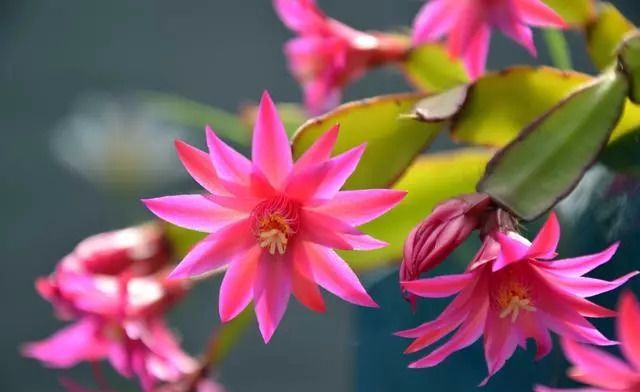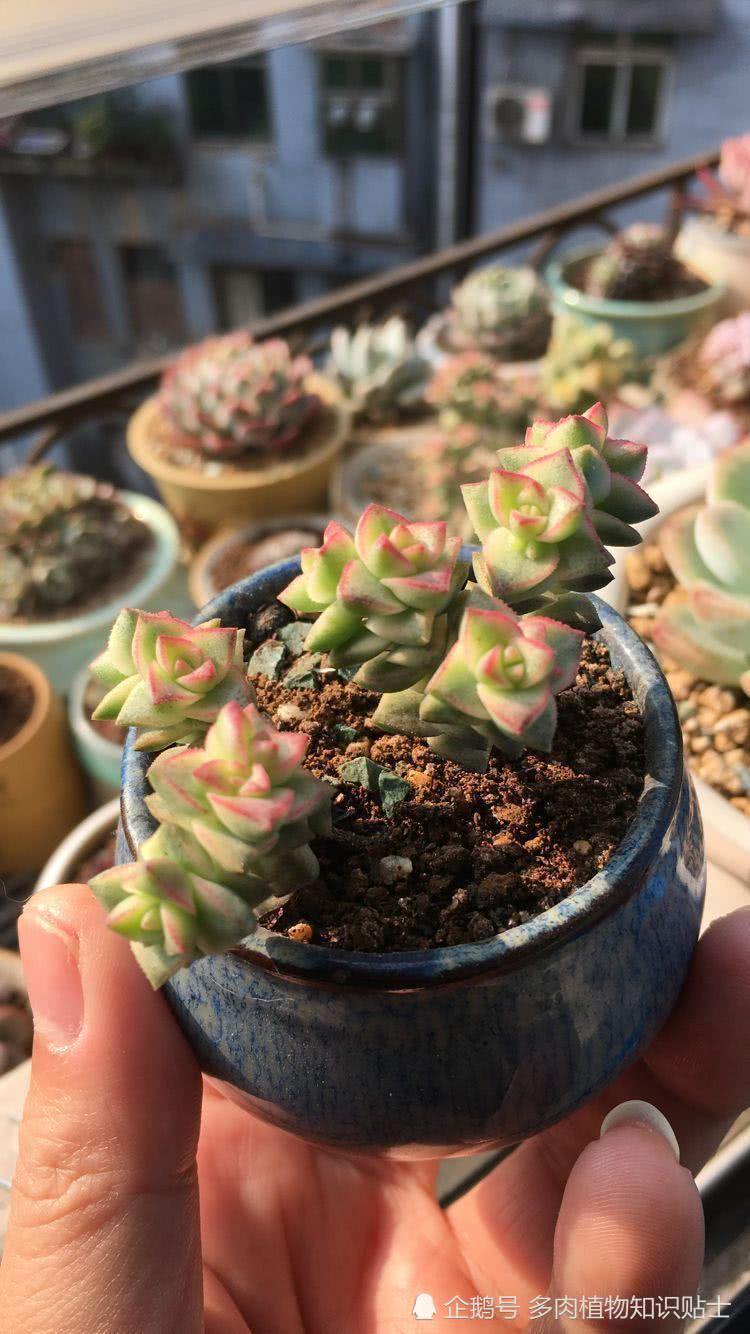There's an unwelcome meatiness in the meat-rich world that strikes back like this...

There are more than 10,000 species of succulent plants in the world, which belong to more than 100 families.
There are many beautiful succulent plants, but I only love the mage.
Among the succulent plants of Sedum, the mage is one of the most colorful varieties.
Red, purple, green, black, yellow, and brocade.
Spring and early summer are also the most beautiful seasons for mages, so I would like to enjoy such beautiful succulent plants with you at the beginning of summer.
I remember going to the greenhouse to buy meat three years ago. I saw many wizards. The owner of the shed said that sales in the south were particularly good, and the bigger the mage, the better.
At that time, it was the first time I bought a mage, and then I experienced the heartache of raising meat meat for the first time! At that time, no matter raised indoors or exposed, there was no way to raise it well. In the end, still did not escape death!
Later, in order to raise a good wizard, in addition to looking up all kinds of questions on the Internet, but also found a lot of meat friends to communicate.
Even as soon as he has time, he will go to the shed to ask the owner. Can you understand how I want to raise a wizard? Later, I became good friends with the shed owner and often gave me some succulent plants.
I would like to share some of my farming experience with you. I hope you will not take detours. Most importantly, I do not want to see succulent plants die. I believe that every friend who raises meat is like me.
Environment:
Spring and autumn is the growing season, and the optimum temperature is 20 °- 25 °.
Summer is the dormant season, and ventilation and sunshade are needed when the temperature is ≥ 35 °.
It grows according to the temperature in winter (there is a difference between the north and the south). If the indoor temperature is suitable, the growth rate will be very fast in winter, and the temperature will stop growing when the temperature is below-5 °. (keep it indoors when the temperature is low in winter. When the mage encounters cold air, there will be diseases such as water, black rot and so on.)
The mage likes the sun more than the succulent plants of other sedum families, so it must grow in a sunny, warm, dry and ventilated place.
Many people can't keep a living mage in summer. the most important reason is that it is stuffy and unventilated in a hot environment, and the sun burns the leaves without sunshade when they are exposed to the sun.
To breed:
Cuttings, leaves, beheadings. The most common way is to cut off the green pole at the top, put the rod in a ventilated place to dry the wound for about 3 days, and apply carbendazim to the wound of the main pole.
(cutting soil is used for growing season according to the following article. )
Leaf insert:
We all know that it is not easy for a mage to insert leaves and breed, but wouldn't it be a profit if he could cut leaves? from then on, he became a succulent man and reached the pinnacle of meat production.
The most suitable season for leaf insertion is spring, and the leaves should be plump, thick, neither too tender nor too nutritious at the bottom of the mage.
Soil is also critical, using rotten leaf soil or planting special nutrient soil, and then mixing coarse sand. Shading can increase the air permeability of the soil and prevent foliar water caused by stagnant water.
After putting on the basin in a cool and ventilated place, there must be no light, because to prevent the rapid loss of water from the leaves will lead to leaf dryness and leaf insertion failure.
Beheading:
Do not use beheading as a last resort. Once beheaded, the aesthetics and integrity of the mother plant will be seriously affected.
Soil:
Soil change in the growing season (spring and summer): the soil change in spring and summer is for better summer, and the mage is dormant in summer. for soil change, it takes place two months before dormancy, so that the mage can experience spring growth, and the root system is more and more stable in the soil. Can maximize the hot summer.
So the soil must be loose and ventilated.
1. "Peat soil + coconut bran, perlite and sand can be used to avoid soil consolidation"
This combination can also be used for cutting mages, as long as a little bit of slow-release fertilizer can be added.
Cuttings are planted in fluvo-aquic soil, cutting off branches in moist soil.
two。 "75% granular soil" can also be used.
Granular soil is better able to maintain water and air permeability between roots.
3. Sand (5) + peat (3) + perlite (2)
Maximum hydrophobicity also has sufficient nutrients to maintain root absorption.
Change soil in autumn: for better growth. The dormancy of the mage ends in autumn, and we need to change the soil for the second time in a year when the green main pole turns brown and Lignification occurs after the torment of the summer.
If there is no Lignification, you don't have to change it.
Mix soil: peat soil 5 + coconut bran 2 + perlite 2 + sand 1, add some slow-release fertilizer (can supplement nutrition) when mixing soil.
Finally, watering:
The mage watering needs to be observed and cannot be dry and rewatered; during the dormant period, try not to water as much as possible, but not at all.
During the dormant period, the root system absorbs very little water, and it depends entirely on the water stored in the body and the nutrition produced by photosynthesis to survive at low consumption. water will lead to black rot, withering and leaf layer-by-layer drop of the main stem, so that it is impossible to save it.
If the leaves begin to grow or are not so firm, touching the leaves with your hands is a sign of lack of water, and a small amount of water can be watered along the edge of the basin.
- Prev

All it takes is a small move for crab claw orchids to grow new buds and burst buds in autumn.
Flower friend message: autumn is coming, crab claw orchid enters the growing period, how to maintain it to blossom? Answer: autumn is coming, the crab claw orchid enters the growing period from the dormant period, at this time we only need to do a small action, that is to fertilize and replenish the crab claw orchid.
- Next

The truest beauty of succulent plants shows incisively and vividly this spring.
Thank you for gggihdx's material to show the most real beauty of meat! Show the most real beauty of flesh and meat! Show the most real beauty of flesh and meat! Show the most real beauty of flesh and meat! Show the most authentic flesh.
Related
- Wuhan Hospital Iron Tree Blooming Result Was Instantly Frightened by the Gardener Master
- Which variety of camellia is the most fragrant and best? Which one do you like best?
- What is the small blue coat, the breeding methods and matters needing attention of the succulent plant
- Dormancy time and maintenance management of succulent plants during dormancy
- Minas succulent how to raise, Minas succulent plant pictures
- What are the varieties of winter succulent plants
- How to raise succulent plants in twelve rolls? let's take a look at some experience of breeding twelve rolls.
- Attention should be paid to water control for succulent plants during dormant period (winter and summer)
- Watering experience of twelve rolls of succulent plants
- Techniques for fertilizing succulent plants. An article will let you know how to fertilize succulent plants.

